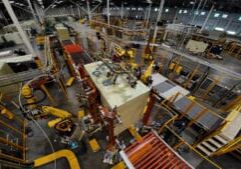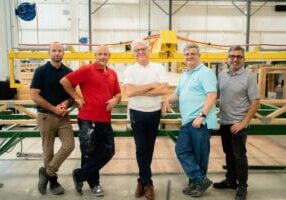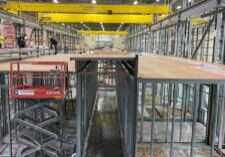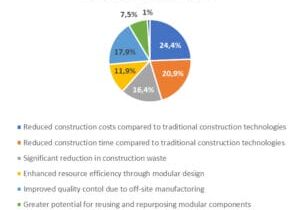Moving from AI Hype to an AI Advantage

Dave Birss is the Founder of The Sensible AI Manifesto
Are you tired of AI yet? I wouldn’t be surprised if you are. I’m immersed in the field, and I regularly find myself rolling my eyes.
The AI hype train has been chugging along at full steam for the past couple of years, and many of us are ready to disembark at the next station. But before we do, let’s take a moment to examine the engine room and see what’s really powering this noisy machine.
The novelty of AI is definitely wearing off. The Gartner Hype Cycle already places it past the Peak of Inflated Expectations, speeding into the Trough of Disillusionment like The Little Engine That Could. And it’s understandable. Many organizations and individuals are not experiencing the productivity gains they expected from the technology.
Is that because the technology is bad? Absolutely not. This is simply a misalignment of expectations and reality. And there are two sides to this disappointing coin.
On one side, we have AI companies that have overinflated the benefits the technology can bring while thoroughly misunderstanding the way organizations work.
On the other side, we have organizations being typically risk-averse and slow to adapt.
So, let’s look at how we can remedy this situation and get the most value from the technology without exposing ourselves to unacceptable risks.

The State of AI in the Construction Industry
The engineering and construction industries approach AI like a cat approaching water - cautiously and with a healthy dose of skepticism. And that’s not surprising. Reputations, livelihoods and lives depend on the right decisions being made. So, it’s no surprise that many in the industry have been slow to adopt a technology with a reputation for spouting claptrap (technically known as hallucinations) with complete confidence.
However, according to an Autodesk study, many in the industry are embracing it wholeheartedly. It states that 79% believe AI will make the industry more creative. 66% believe that in 2 to 3 years, AI will be essential across the board. And 78% agree AI will enhance their industry.
But when it comes down to it, adoption varies wildly between territories and across organizations. As much as the report states that 78% of respondents were confident their company would make the right decisions regarding AI, other research indicates that may be wishful thinking.
A recent study from Upwork shows a mismatch between leadership expectations and the reality for those on the frontline. While 96% of C-suite leaders expect AI to boost worker productivity, 77% of workers report that AI has increased their workload. Most employees are facing burnout, and a third are looking to quit within the next six months.
It seems AI has become the digital equivalent of that coworker who always volunteers you for extra tasks in meetings.
This aligns with what I’ve seen myself.
Most of the conversations I have with leadership teams involve them asking me how they can use the technology to increase productivity. That’s not surprising, of course. Most companies tend to measure their success by how much they can get done for the least amount of money. And AI has been sold to them as a productivity tool.
But that’s just not where the real benefits of the technology lie.
Generative AI (the term we use for tools like ChatGPT and image generators) comes into its own when it’s used to help people achieve more, rather than just do more. It’s foolish to simply focus on outsourcing tasks when the technology excels at amplifying skills.
However, it’s understandable. The technology is still new. There aren’t stacks of case studies or white papers to guide the risk-averse decision-making of the c-suite. So decisions are made based on the understanding of the usual risks, while ignoring the actual risks of AI.
So let’s look at what you can do to get the most value from AI while avoiding the pitfalls.
Don’t Improv. Write a Script.
Most companies I’ve spoken to tell me they’ve got an AI strategy. But they rarely do. Saying, “We’ll let a few people try it and see how they get on” is not a strategy. At best, it’s a loose roadmap drawn in crayon.
A good AI strategy should be tightly integrated with the company’s overall business goals. It should focus on solving specific business problems, enhancing core competencies, or creating competitive advantages. The goals need to be specific and aligned with key business metrics. This ensures your AI initiatives drive measurable business value rather than end up as a novelty experiment.
For example, if a construction company’s strategy involves improving efficiency in project delivery, AI could be used to optimize project timelines and reduce delays. The leadership team could focus on deploying AI-powered project management tools that predict potential bottlenecks or resource shortages and suggest adjustments before the situation becomes a problem.
If you have a strong business strategy, your AI strategy should be focused on enabling and amplifying it.
Don’t Treat Generative AI as a Tech Solution
This probably sounds a bit ridiculous because of course it’s a tech solution. But you won’t get the most out of Generative AI if you leave it entirely in the hands of your CTO.
That’s because the most important elements of any AI implementation are the humans who use it. The attitudes and skills of your employees will have a far more significant impact on the value you get from Generative AI than the choice of tool itself.
To embed Generative AI effectively, you need to involve leadership across the organization. The CEO, CIO, CDO, COO, CHRO, CCO, and CMO should be just as involved as the CTO. Because leadership vision, strategy, data, measurement, compliance, creativity, training, hiring, and every other function are likely to be impacted by Generative AI.
Don’t Look at AI in Isolation
Generative AI is just one of a cluster of technologies that are impacting the business world at the same time. Many of these emerging technologies impact each other, and they can cause confusion for people who have better things to do with their time than hang out on nerdy news sites.
For example, AI is not the same as automation - yet they often get confused with each other. AI acts as a thinking assistant, while automation acts as a doing assistant. These two technologies are about to converge, but at present, they’re still quite separate.
Some of the other technologies you should be tracking on your radar include virtual reality, augmented reality, robotics, blockchain, cloud computing, digital twins, human augmentation, and - increasingly importantly - cybersecurity.
AI will combine with each of these advancements to make them more powerful. Just imagine the combination of AI and robotics on a work site. Or AI and augmented reality to bring an architect’s plans to life on location.
Involve the Whole Team
Implementing AI successfully requires all the organizational change skills you can muster. And the best way to make any change at ground level is to involve the team rather than dictate your demands.
One of the actions I recommend is holding an AI amnesty. Research shows that many people secretly use AI without permission - even if they’re told not to (yes, even in your brilliant organization). Rather than seeing these individuals as transgressors, see them as pioneers and tap into their experience and insights to get a better understanding of the opportunities. These heroes are doing the equivalent of creating desire paths, that tend to be more efficient than any route we’d design intentionally.
Fill Your Knowledge Gaps
At the end of the day, the only way to truly get to grips with AI is to dive in and learn. But fortunately, there are resources out there to help. The Sensible AI Manifesto, for instance, offers valuable guidance on making the right decisions for your business. And there are some great courses out there to get you up to speed (naturally, I recommend starting with LinkedIn Learning).
But the effort is worth it. When you use AI strategically, it can open up opportunities you might never have considered before. It’s not just about doing more of the same faster. It’s about enhancing your team’s capabilities and discovering innovative ways to excel at what you do.
Best of all, learning about AI will help you see past the overinflated hype and identify the opportunities specific to your own business. Learning about AI is like peeling an onion - each layer reveals something new, and occasionally it might make your eyes water. But in the end, you’ll have all the ingredients you need to cook up some real innovation in your organization.
Dave Birss has taught over half a million people how to get more value out of Generative AI. He consults for organizations all over the world. He launched The Sensible AI Manifesto to help businesses of all sizes make the right decisions. And you can find his highly-rated courses on LinkedIn Learning and davebirss.com
More from Modular Advantage
Resia: Breaking All the Rules
Resia Manufacturing, a division of U.S.-based Resia, is now offering prefabricated bathroom and kitchen components to industry partners. Its hybrid fabrication facility produces more precise bathroom and kitchen components (modules) faster and at lower cost than traditional construction. Here’s how Resia Manufacturing does it.
How LINQ Modular Innovates to Bring Modular To The Market in the UAE and Beyond
LINQ Modular, with an office and three manufacturing facilities in Dubai, is a modular firm based in United Arab Emirates. The company is on a mission: to break open the housing and construction markets in the Gulf Cooperation Council (GCC) area with modular.
ModMax: Redefining Modular Construction with Confidence and Precision
ModMax was born out of frustration—frustration with five persistent pain points in modular construction: Permitting bottlenecks. Production delays. Rigid designs. Disconnect between “the office” and the field. Lack of transparency and communication.
LifeArk: Disaster-Resilient Housing from Recycled Plastic and 100-year-old Technology
Wee compares LifeArk’s housing units to Yeti coolers, as they are built similarly. Each component takes 15 to 20 minutes to manufacture, has an R-value of 40, and includes molded slots and chases for wiring, plumbing, fire sprinklers, and other utilities.
Building the Future of Modular Edge Infrastructure
The edge data center market is expanding rapidly, driven by the surge in AI workloads, IoT adoption, and the need for localized compute power. In these environments, sustainability, scalability, and reliability are non-negotiable. Cooling is among the most complex challenges for operators—and one of the most decisive factors in long-term success.
Accelerating Light-Gauge Steel Construction: A Semi-Automated Digital Workflow for Off-Site Projects
For construction professionals, the message is clear. By adopting semi-automation and digitalization, companies can deliver projects faster, more accurately, and more profitably, while also building stronger collaboration across teams. The approach is not about replacing people with machines, but about empowering people with better tools and processes.
Why Modular Data Centers Are Gaining Momentum
Artificial intelligence, high-performance computing, and edge applications push the limits of traditional “stick-built” data centers. They take years build, often struggle with high density workloads, and aren’t optimized for deployments near end users. Modular data center platforms are purpose-built to address these challenges, offering flexibility and scalability to adapt to evolving technologies, while opening new opportunities for the modular construction industry.
Supply Chain Innovation in Action: 5 Habits Every Modular Leader Should Practice
By applying these principles to supply chain practices — collaborative planning, strategic procurement, scenario modeling, digital tools, and transparent forecasting — construction leaders can build value chains that are not just efficient and agile, but truly innovative.
Exploring the Role of Modular Integrated Construction (MiC) in Advancing Circular City Principles – A Survey of Stakeholder Perspectives
The survey findings highlight the significant potential of Modular integrated Construction (MiC) in advancing the development of circular cities. By reducing costs, accelerating construction timelines, and minimizing waste generation, MiC offers a promising approach to sustainable urban development.
The Use of MS POLYMER™-Based Sealants and Adhesives in Modular Building
These products combine flexibility and elastic recovery with excellent adhesion to different substrates and have already shown their usefulness in traditional construction. Now it’s time for them to be put to use in the modular construction industry.










